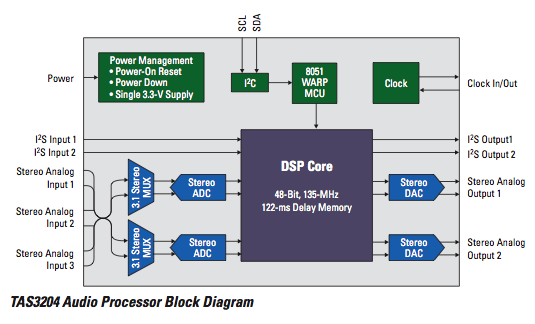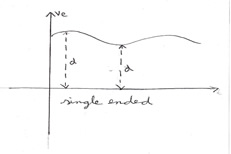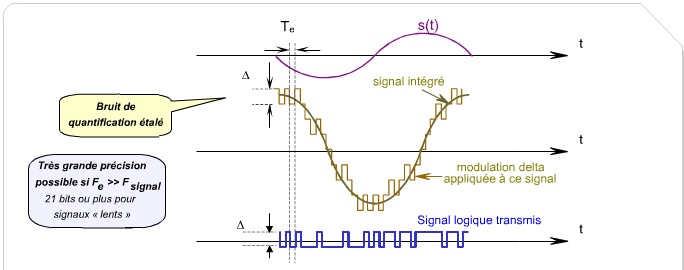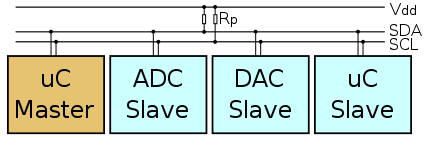We will examine key parts of this component:



We have a good accuracy in the DAC input.
The DACs do samplic in sigma-delta modulation. What does this mean?
Delta modulation tests whether the signal sample exceeds the signal level and thus obtains the corresponding numerical value:

In Sigma-Delta modulation we will integrate the signal and then we will apply the same method for sampling delta modulation. And so we output the numerical value of our analog signal input.

One advantage of the Sigma-Delta against Delta is that the noise is separated from the signal, while in the Delta, they go together.
DACs:
The TAS3204 has 2 DACs made in "digital interpolation filter". Same as the ADCs, it uses the Sigma-Delta modulation plus they have a reconstruction filter. The maximum sampling thereof is 48KHz. Each NAC increases the resolution of the input signal by 128.
And what does that mean?
The DACs have filters like "digital interpolation" which offer advantages such as excellent flexibility, high performance (in thermal attenuation and selectivity). Greater stability and less time for the filtering process. In addition, CSPs are being incorporated in digital filters. One example of the incorporation of a DSP is in cellular base stations.
The CNAs have sigma delta modulation as for CANS. The maximum frequency of CNAs is 48KHz. The resolution of the input signal is increased by 128 before converting the analog signal output.
MUC:
The Digital processor is a dual-core device which has a microcontroller. It runs at 135MHz, and the DSP is capable of up to five operations per clock cycle. The microcontroller is a 8051 stadard core. It optimizes the TAS3204 by controlling the algorithms and the communication (I2C). The DSP posseses a 48 bits bus which enables the data processing. Its unique 76 bits cycle accelerates the sound algorithm processing.
I2C:
The I2C communication port
The communication port is a I2C (For more information see glossary)
The main functions of this communication port are:
-High transfer rate
-Ease of data transfer between various components.
